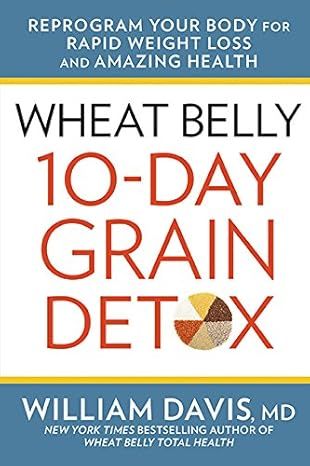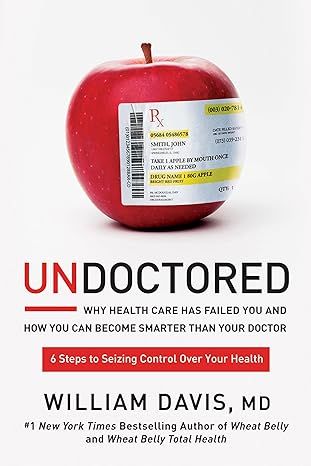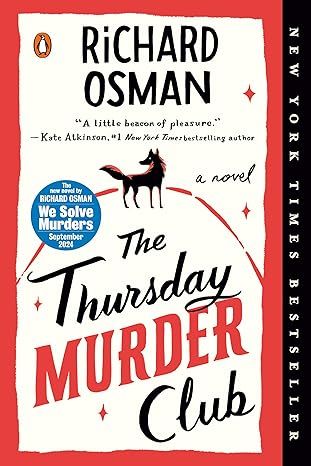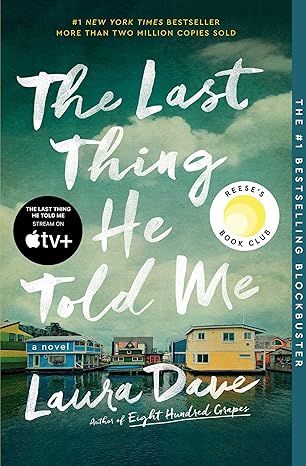Wheat Belly Total Health: The Ultimate Grain-Free Health and Weight-Loss Life Plan
4.4
-
1,589 ratings
Join the millions of people worldwide who have lost 30, 50, or 100+ pounds and reversed chronic health problems by embracing the Wheat Belly message. In New York Times bestseller Wheat Belly Total Health, you will learn not only how and why you must say no to grains, but also how you can achieve a level of radiant health and well being you never thought possible. Dr. William Davis will also show you:
• Precisely what you should and should not eat, including a breakdown of the different types of grains and the differences between them • What to do when facing various post-wheat scenarios, such as intense wheat withdrawal, stalled weight loss, and the loss of too much weight • Which supplements can boost health to higher levels even after the health gains of grain elimination are experienced • The science of exactly how your health improves after grains are eliminated, including your mood, sleep, endocrine health, metabolic health, cardiovascular health, physical performance, and much more • Inspiring testimonials and before/after photographs of those who are proudly living wheat-free
Wheat Belly Total Health is about regaining full metabolic well being, reflected in blood sugar and other measures that may require additional steps beyond grain elimination. This book is your guide on the journey to long-term health and vitality—and it will be the only book you ever need to break the grip of wheat, lose weight for good, and achieve vibrant, lasting health.
Kindle
$9.99
Available instantly
Audiobook
$0.00
with membership trial
Hardcover
$21.53
Paperback
$12.82
Ships from
Amazon.com
Payment
Secure transaction
ISBN-10
1623367700
ISBN-13
978-1623367701
Print length
416 pages
Language
English
Publisher
Rodale Books
Publication date
September 12, 2016
Dimensions
6 x 1.06 x 9 inches
Item weight
1.22 pounds
Product details
ASIN :
B00K8DSRHW
File size :
2394 KB
Text-to-speech :
Enabled
Screen reader :
Supported
Enhanced typesetting :
Enabled
X-Ray :
Enabled
Word wise :
Enabled
Editorial reviews
About the Author
WILLIAM DAVIS, MD, is a New York Times bestselling author and a cardiologist who advocates unique, insightful, and cutting-edge strategies to help individuals discover the health hidden within them. His blog wheatbellyblog has been visited by millions of people. Dr. Davis has also shared his passion for wheat-free living on national television shows including The Dr. Oz Show and CBS This Morning. His Wheat Belly Total Health program became a public television special. He lives in Wisconsin.
Sample
Excerpt. © Reprinted by permission. All rights reserved.
CHAPTER 1
LIBERATE YOUR INNER COW: LIFE UNGRAINED
Goldfish do not eat sausages.
—John Cleese, "How to Feed a Goldfish," Monty Python's Flying Circus
SINCE YOU ARE reading this book, I take it that you are a member of the species Homo sapiens. You are likely not a giraffe, toad, or woodpecker. Nor are you a ruminant, those taciturn creatures that graze on grass.
Ruminants, such as goats and cows, and their ancient, wild counterparts, ibex and aurochs, enjoy evolutionary adaptations that allow them to consume grasses. They have continuously growing teeth to compensate for the wear generated by coarse, sandlike phytolith particles in grass blades; produce in excess of 100 quarts of saliva per day; have four-compartment stomachs that host unique microorganisms to digest grass components, including a compartment that grinds and then regurgitates its contents up as a cud to rechew; and a long, spiral colon that's also host to microorganisms that further digest grassy remains. In other words, ruminants have a gastrointestinal system uniquely specialized to consume grasses.
You don't look, smell, or act like a ruminant. Then why would you eat like one?
Those of you who have already forgone wheat do not, of course. But if you remain of the "healthy whole grain"-consuming persuasion, you have fallen victim to believing that grasses should be your primary source of calories. Just as Kentucky bluegrass and ryegrass in your backyard are grasses from the biological family Poaceae, so are wheat, rye, barley, corn, rice, bulgur, sorghum, triticale, millet, teff, and oats. You grow teeth twice in your life, then stop, leaving you to make do for a lifetime with a prepubertal set that erupted around age 10; produce a meager quart of saliva per day; have three fewer stomach compartments unpopulated by foreign organisms and without grinding action; don't chew a cud; and have a relatively uninteresting, linear, nonspiral colon. These adaptations allow you to be omnivorous--but not to consume grasses.
Early members of our species found nourishment through scavenging, and then hunting, animals such as gazelles, turtles, birds, and fish, and consuming the edible parts of plants, including fruit and roots, as well as mushrooms, nuts, and seeds. Hungry humans instinctively regarded all of these as food. About 10,000 years ago, during a period of increasing temperature and dryness in the Fertile Crescent, humans observed the ibex and aurochs grazing on einkorn, the ancient predecessor of modern wheat. Our hungry, omnivorous ancestors asked, "Can we eat that, too?" They did, and surely got sick: vomiting, cramps, and diarrhea. At the very least they simply passed wheat plants out undigested, since humans lack the ruminant digestive apparatus. Grass plants in their intact form are unquestionably unappetizing. We somehow figured out that for humans, the only edible part of the einkorn plant was the seed--not the roots, not the stem, not the leaves, not the entire seed head--just the seed, and even that was only edible after the outer husk was removed and the seed was chewed or crushed with rocks and then heated in crude pottery over fire. Only then could we consume the seeds of this grass as porridge, a practice that served us well in times of desperation when ibex meat, bird eggs, and figs were in short supply.
Similar grass-consuming adventures occurred with teosinte and maize (the ancestors of modern corn) in the Americas; rice from the swamps of Asia; and sorghum and millet in sub-Saharan Africa, all requiring similar manipulations to allow the edible part--the seed--to be consumed by humans. Some grasses, such as sorghum, posed other obstacles; its content of poisons (such as hydrocyanic acid, or cyanide) results in sudden death when the plant is consumed before maturity. Natural evolution of grasses led to wheat strains such as emmer, spelt, and kamut as wheat exchanged genes from other wild grasses, while humans selected strains of corn with larger seeds and seed heads (cobs).
What happened to those first humans, hungry and desperate, who figured out how to make this one component of grasses--the seed--edible? Incredibly, anthropologists have known this for years. The first humans to consume the grassy food of the ibex and aurochs experienced explosive tooth decay; shrinkage of the maxillary bone and mandible, resulting in tooth crowding; iron deficiency; and scurvy. They also experienced a reduction in bone diameter and length, resulting in a loss of as much as 5 inches in height for men and 3 inches for women.1
The deterioration of dental health is especially interesting, as dental decay was uncommon prior to the consumption of the seeds of grasses, affecting less than 1 percent of all teeth recovered, despite the lack of toothbrushes, toothpaste, fluoridated water, dental floss, and dentists. Even though they lacked any notion of dental hygiene (aside from possibly using a twig to pick the fibers of wild boar from between their teeth), dental decay was simply not a problem that beset many members of our species prior to the consumption of grains. The notion of toothless savages is all wrong; they enjoyed sturdy, intact teeth for their entire lives. It was only after humans began to resort to the seeds of grasses for calories that mouths of rotten and crooked teeth began to appear in children and adults. From that point on, decay was evident in 16 to 49 percent of all teeth recovered, along with tooth loss and abscesses, making tooth decay as commonplace as bad hair among humans of the agricultural Neolithic Age.2
In short, when we started consuming the seeds of grasses 10,000 years ago, this food source may have allowed us to survive another day, week, or month during times when foods we had instinctively consumed during the preceding 2.5 million years fell into short supply. But this expedient represents a dietary pattern that constitutes only 0.4 percent--less than one-half of 1 percent--of our time on earth. This change in dietary fortunes was accompanied by a substantial price. From the standpoint of oral health, humans remained in the Dental Dark Ages from their first taste of porridge all the way up until recent times. History is rich with descriptions of toothaches, oral abscesses, and stumbling and painful efforts to extract tainted teeth. Remember George Washington and his mouthful of wooden false teeth? It wasn't until the 20th century that modern dental hygiene was born and we finally managed to keep most of our teeth through adulthood.
Fast-forward to the 21st century: Modern wheat now accounts for 20 percent of all calories consumed by humans; the seeds of wheat, corn, and rice combined make up 50 percent.3 Yes, the seeds of grasses provide half of all human calories. We have become a grass seed-consuming species, a development enthusiastically applauded by agencies such as the USDA, which advises us that increasing our consumption to 60 percent of calories or higher is a laudable dietary goal. It's also a situation celebrated by all of those people who trade grain on an international scale, since the seeds of grasses have a prolonged shelf life (months to years) that allows transoceanic shipment, they're easy to store, they don't require refrigeration, and they're in demand worldwide--all the traits desirable in a commoditized version of food. The transformation of foodstuff into that of a commodity that's tradeable on a global scale allows financial manipulations, such as buying and selling futures, hedges, and complex derivative instruments--the tools of mega-commerce--to emerge. You can't do that with organic blueberries or Atlantic salmon.
Examine the anatomy of a member of the species Homo sapiens and you cannot escape the conclusion that you are not a ruminant, have none of the adaptive digestive traits of such creatures, and can only consume the seeds of grasses--the food of desperation--by accepting a decline in your health. But the seeds of grasses can be used to feed the masses cheaply, quickly, and on a massive scale, all while generating huge profits for those who control the flow of these commoditized foods.
MUTANT NINJA GRASSES
The seeds of grasses, known to us more familiarly as "grains" or "cereals," have always been a problem for us nonruminant creatures. But then busy geneticists and agribusiness got into the act. That's when grains went from bad to worse.
Readers of the original Wheat Belly know that modern wheat is no longer the 4 1/2-foot-tall traditional plant we all remember; it is now an 18-inch-tall plant with a short, thick stalk; long seed head; and larger seeds. It has a much greater yield per acre than its traditional predecessors. This high- yield strain of wheat, now the darling of agribusiness, was not created through genetic modification, but through repetitive hybridizations, mating wheat with non-wheat grasses to introduce new genes (wheat is a grass, after all) and through mutagenesis, the use of high-dose x-rays, gamma rays, and chemicals to induce mutations. Yes: Modern wheat is, to a considerable degree, a grass that contains an array of mutations, some of which have been mapped and identified, many of which have not. Such uncertainties never faze agribusiness, however. Unique mutated proteins? No problem. The USDA and FDA say they're okay, too--perfectly fine for public consumption.
Over the years, there have been many efforts to genetically modify wheat, such as by using gene-splicing technology to insert or delete a gene. However, public resistance has dampened efforts to bring genetically modified (GM) wheat to market, so no wheat currently sold is, in the terminology of genetics, "genetically modified." (There have been recent industry rumblings, however, that make the prospect of true GM wheat a probable reality in the near future.) All of the changes introduced into modern wheat are the results of methods that predate the technology to create GM foods. This does not mean that the methods used to change wheat were benign; in fact, the crude and imprecise methods used to change wheat, such as chemical mutagenesis, have the potential to be worse than genetic modification, yielding a greater number of unanticipated changes in genetic code than the handful introduced through gene-splicing.4
Corn and rice, on the other hand, have been genetically modified, in addition to undergoing other changes. For instance, scientists introduced genes to make corn resistant to the herbicide glyphosate and to express Bacillus thurigiensis (Bt), a toxin that kills insects, while rice has been genetically modified to make it resistant to the herbicide glufosinate and to express beta-carotene (a variety called Golden Rice). Problem: While, in theory, the notion of just inserting one silly gene seems simple and straightforward, it is anything but. The methods of gene insertion remain crude. The site of insertion--which chromosome, within or alongside other genes, within or without various control elements--not to mention disruption of epigenetic effects that control gene expression, cannot be controlled with current technology. And it's misleading to say that only one gene is inserted, as the methods used usually require several genes to be inserted. (We discuss the nature of specific changes in GM grains in Chapter 2.)
The wheat, corn, and rice that make up 50 percent of the human diet in the 21st century are not the wheat, corn, and rice of the 20th century. They're not the wheat, corn, and rice of the Middle Ages, nor of the Bible, nor of the Egyptian empire. And they are definitely not the same wheat, corn, and rice that was harvested by those early hungry humans. They are what I call "Frankengrains": hybridized, mutated, genetically modified to suit the desires of agribusiness, and now available at a supermarket, convenience store, or school near you.
Wheat: What Changed . . . and Why Are the Changes So Bad?
All strains of wheat, including traditional strains like spelt and emmer, are problems for nonruminant humans who consume them. But modern wheat is the worst.
Modern wheat looks different: shorter, thicker shaft, larger seeds. The reduction in height is due to mutations in Rh (reduced height) genes that code for the protein gibberellin, which controls stalk length. This one mutant gene is accompanied by other mutations. Changes in Rh genes are thereby accompanied by other changes in the genetic code of the wheat plant.5 There's more here than meets the eye.
Gliadin
While gluten is often fingered as the source of wheat's problems, it's really gliadin, a protein within gluten, that is the culprit behind many destructive health effects of modern wheat. There are more than 200 forms of gliadin proteins, all incompletely digestible.6 One important change that has emerged over the past 50 years, for example, is increased expression of a gene called Glia-α9, which yields a gliadin protein that is the most potent trigger for celiac disease. While the Glia-α9 gene was absent from most strains of wheat from the early 20th century, it is now present in nearly all modern varieties,7 likely accounting for the 400 percent increase in celiac disease witnessed since 1948.8
New gliadin variants are partially digested into small peptides that enter the bloodstream and then bind to opiate receptors in the human brain--the same receptors activated by heroin and morphine.9 Researchers call these peptides "exorphins," or exogenous morphine-like com£ds. Gliadin-derived peptides, however, generate no "high," but they do trigger increased appetite and increased calorie consumption, with studies demonstrating consistent increases of 400 calories per day, mostly from carbohydrates.
Gluten
Gluten (gliadin + glutenins) is the stuff that confers the stretchiness unique to wheat dough. Gluten is a popular additive in processed foods such as sauces, instant soups, and frozen foods, which means the average person ingests between 15 and 20 grams (g) per day.10 Gluten has been genetically manipulated to improve the baking characteristics of its glutenin. Geneticists have therefore crossbred wheat strains repeatedly, bred wheat with non-wheat grasses to introduce new genes, and used chemicals and radiation to induce mutations. Breeding methods used to alter gluten quality do not result in predictable changes. Hybridizing two different wheat plants yields as many as 14 unique glutenin proteins never before encountered by humans.11
Wheat Germ Agglutinin
The genetic changes inflicted on wheat have altered the structure of wheat germ agglutinin (WGA), a protein in wheat that provides protection against molds and insects. The structure of WGA in modern wheat, for instance, differs from that of ancient wheat strains.12 WGA is indigestible and toxic, resistant to any breakdown in the human body, and unchanged by cooking, baking, and sourdough fermentation. Unlike gluten and gliadin, which require genetic susceptibility to exert some of their negative effects, WGA does its damage directly. WGA alone is sufficient to generate celiac disease-like intestinal damage by disrupting microvilli, the absorptive "hairs" of intestinal cells.13
Read more
About the authors
William Davis
Dr. Davis provides solutions to health problems by addressing the microbiome, massively disrupted in modern people. He shows readers in his Super Gut book, for instance, how to restore important lost microbes lost such as Lactobacillus reuteri, restored by using a unique method of yogurt fermentation that smooths skin and reduces wrinkles, restores youthful muscle and strength, deepens sleep, reduces appetite and provides many other youth-preserving and anti-aging effects. In Super Gut and in his website, www.DrDavisInfiniteHealth.com, he provides additional do-it-yourself-at-home strategies for benefits such as improved mood, improved athletic performance, better sleep, heightened immunity, and improved body composition.
Dr. William Davis is also responsible for exposing the incredible nutritional blunder made by "official" health agencies: Eat more "healthy whole grains." The wheat of today is different from the wheat of 1960, thanks to extensive genetics manipulations introduced to increase yield-per-acre. Eliminating wheat yields results beyond everyone's expectations: substantial weight loss, correction of cholesterol abnormalities, relief from inflammatory diseases like arthritis, better mood, reduced blood sugar with many type 2 diabetics being freed of insulin and other drugs, all articulated through his Wheat Belly series of books. He is also a champion of individual self-directed health, as discussed in his Undoctored book.
Dr. Davis lives what he preaches, not having indulged in a wheat-containing bagel, ciabatta, or pretzel in many years, while consuming various fermentation products that yield unexpected health benefits. Dr. Davis lives in Milwaukee, Wisconsin.
Read more
Reviews
Customer reviews
4.4 out of 5
1,589 global ratings
Angela A Stanton, PhD
5
Get this book! If you every want just 1 book on health, this is it!
Reviewed in the United States on October 31, 2015
Verified Purchase
By far the best book on wheat and other grains! I also read the Grain Brain but while that book is pushing a particular agenda toward the ketogenic diet (there is nothing wrong with that but the whole world will not become ketogenic), I find this book is not pushing in any direction and is more "professional" shall we say. It is teaching rather than preaching and I really appreciate that. I am a scientist but this book is able to keep my interest becuase it manages to write in a style that is understandable for all audiences so one need not be a scientist to read it yet if you have never taken a science course in your life you still will understanding it. I find it exceptionally helpful in understanding not only that grains are bad... most of us know that. But why and how they commit their crime of damage is very well described. I usually use a highlighter while reading books and I must say I am not even half through the book but finished 3 highlighters!
As an author myself, I am learning a lot of information that is extremely useful for both style and content for my 2nd edition of my book Fighting the Migraine Epidemic since grains are sooooooooooo connected to what migraines are triggered by (and grains are not listed as triggers!). I have now been grain free for 2 months (not yet enough, I know), but already see changes in my body that tells me that even though I tested totally negative to all grain allergens, thus showing I am not allergic, I had major body-function interruptions as a result of grain! Nutrition absorption problems is one of the reasons and glycemic index/load are yet another not to mention protein synthesis--or lack thereof while you eat grains.
I have no diabetes or any problems but if you do, quitting grains is more important than quitting sugar! This is an important lesson! The best thing about quitting grains is that once you quit, you also stop craving sugar! Grains make you crave sugar--obviously since grains GI is between 75 and 100, higher than sugar, so you get a sugar crash, literally, after a slice of bread or a serving of pasta or rice. Not eating grains stops your insulin from being called on all the time and so no insulin in the blood: not hungry, no diabetes, no high cholesterol, no sugar crash, ability to absorb nutrients, no after-lunch fall over in sleep time, and more energy than you ever had. Go for it, read the book! It will save you thousands of dollars in medical bills!
Read more
17 people found this helpful
KathleenG
5
He’s absolutely right about all grains being bad for us. I wishhas changed my life.
Reviewed in the United States on November 3, 2018
Verified Purchase
I am shocked how much this book has changed my life for the better! I gave up all gluten and wheat three years ago when I discovered that I had Celiac disease. When Dr. Davis came out with his second book, this one, I blew it off thinking “well I gave up wheat—I don’t want to give up all other grains—and I certainly don’t want to give up substitute products for the wheat products I was eating before” So for the last three years I have had better health in someways but I still struggled with hunger and cravings. Recently, we had to go away on a five week trip for a family member’s medical treatment, and I put on 3 pounds. When I got back, I tried for 3 1/2 weeks to lose those 3 pounds and just couldn’t seem to do it. I was eating only 1000 cal a day and I knew there had to be something I was eating that was causing problems for me. I realized that I had added gluten-free bread— just half a slice a day— some weeks before. I remembered this book by Dr. Davis and wondered if I was someone that needed to give up all grains and so I picked it up and read it again. This time I read it all the way through and it made so much sense! The wonderful thing is that anybody reading this review can try what I tried: giving up all grains for a period of time and seeing how they feel. Dr. Davis is exactly right – – I lost 3 pounds immediately and all hunger and all cravings were gone! I am still almost in shock that I didn’t understand this before. I read a dialogue Dr. Davis had with another nutritionist in which Dr. Davis explained that it’s always easier to give up grains and then sugar because when you give up grains cravings will disappear – – and that’s exactly what happened to me! I don’t have cravings in fact I forget to eat. I’m the lowest weight that I’ve ever been in my life and I feel wonderful! Thank you Dr. Davis from my heart.
Read more
41 people found this helpful
Paulina
5
Awesome!!!!!!
Reviewed in the United States on September 30, 2014
Verified Purchase
I saw Dr. Davis on Dr. Oz recently promoting his new book and thought twice about purchasing it because I had read Wheat Belly and thought "how much more information can he add?' Turns out my skepticism was completely unwarranted and I cannot tell you how impressed I am with Dr. Davis and his new book!! Even if you've read Wheat Belly and are following his advice - I did to an extent but he seemed a little out there with his claims on the evils of wheat when other doctors I respect, like Dr. Weil said otherwise - this second book takes you much further in improving your health and will have you 100 percent convinced. There is a wealth of information keeping up with the most recent studies and conforming pretty much to the Paleo lifestyle which I have recently adopted. Totally convincing and so well written and interesting I could not put it down! I also highly recommend Grain Brain by Dr. Perlmutter if you have any doubt that this is the way humans were meant to eat (reading Wheat Belly and then Grain Brain had me finally convinced) and that doing otherwise has caused innumerable health problems in our society. Following the advice in this book will totally transform your body and your mind and you will never have to worry about weight again. There is even an extremely helpful chapter on why you may not be able to lose weight despite your best efforts. Thanks to Dr. Davis for helping to educate us after decades of bad advice from doctors, the government and the food industry. After you read this you will think "how could we all have been so stupid"?
Read more
36 people found this helpful
Top William Davis titles
View all
Wheat Belly Cookbook: 150 Recipes To Help You Lose The Wheat, Los
4.4
-
2,474
$1.75

Wheat Belly 30-Minute (Or Less!) Cookbook: 200 Quick and Simple Recipes to Lose the Wheat, Lose the Weight, and Find Your Path Back to Health
4.4
-
2,446
$8.99

Wheat Belly 10-Day Grain Detox
4.4
-
1,229
$3.94

Undoctored: Why Health Care Has Failed You and How You Can Become Smarter Than Your Doctor
4.6
-
1,259
$0.99

Wheat Belly (Revised and Expanded Edition): Lose the Wheat, Lose the Weight, and Find Your Path Back to Health
4.6
-
2,034
$8.99

Super Gut
4.6
-
1,959
$0.99
Similar Books

Wheat Belly Cookbook: 150 Recipes To Help You Lose The Wheat, Los
4.4
-
2,474
$1.75

Wheat Belly 30-Minute (Or Less!) Cookbook: 200 Quick and Simple Recipes to Lose the Wheat, Lose the Weight, and Find Your Path Back to Health
4.4
-
2,446
$8.99

Wheat Belly (Revised and Expanded Edition): Lose the Wheat, Lose the Weight, and Find Your Path Back to Health
4.6
-
2,034
$8.99

Super Gut
4.6
-
1,959
$0.99

The Omnivore's Dilemma: A Natural History of Four Meals
4.6
-
5,359
$4.38
Best sellers
View all
The Tuscan Child
4.2
-
100,022
$8.39

The Thursday Murder Club: A Novel (A Thursday Murder Club Mystery)
4.3
-
155,575
$6.33

Sapiens: A Brief History of Humankind
4.6
-
140,302
$13.49

The Butterfly Garden (The Collector, 1)
4.3
-
88,556
$9.59

Things We Hide from the Light (Knockemout Series, 2)
4.4
-
94,890
$11.66

The Last Thing He Told Me: A Novel
4.3
-
154,085
$2.99

The Perfect Marriage: A Completely Gripping Psychological Suspense
4.3
-
143,196
$9.47

The Coworker
4.1
-
80,003
$13.48

First Lie Wins: A Novel (Random House Large Print)
4.3
-
54,062
$14.99

Mile High (Windy City Series Book 1)
4.4
-
59,745
$16.19

Layla
4.2
-
107,613
$8.99

The Locked Door
4.4
-
94,673
$8.53

